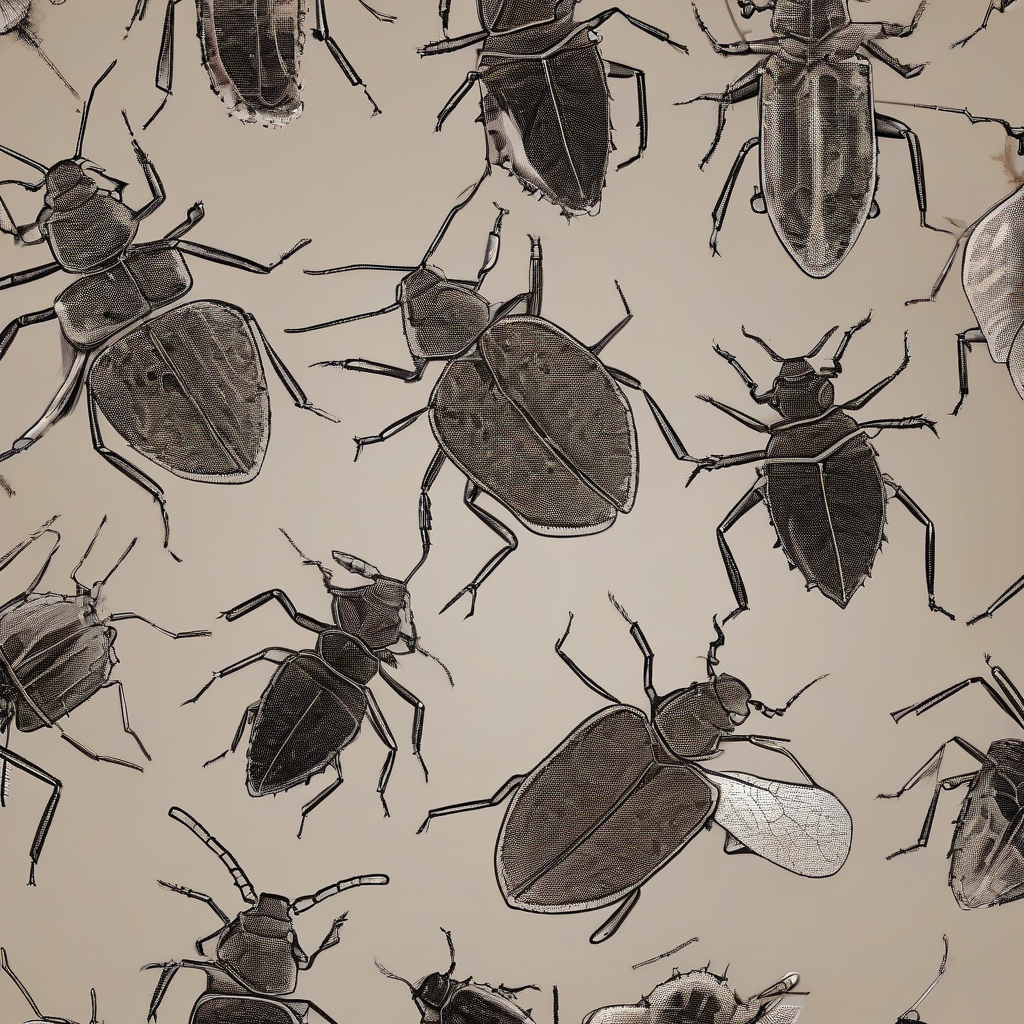Conquering Boston’s Pests: A Comprehensive Guide to Pest Control
Boston, with its rich history and vibrant urban landscape, also faces the challenges of pest infestations. From the common house mouse to more problematic species like bed bugs and rodents, understanding and addressing pest control is crucial for maintaining a healthy and comfortable living environment. This guide provides an in-depth look at pest control in Boston, covering identification, prevention, and effective control methods.
Common Pests in Boston
- Rodents (Mice and Rats): Boston’s aging infrastructure and abundance of food sources create ideal conditions for rodent infestations. These pests can cause significant damage to property and pose health risks through disease transmission.
- Cockroaches: These resilient insects thrive in warm, damp environments, often found in basements, kitchens, and bathrooms. Their presence can contaminate food and surfaces, leading to health concerns.
- Bed Bugs: These tiny, blood-feeding insects are a significant problem in Boston, infesting homes, hotels, and even public transportation. Their bites cause itchy welts and can disrupt sleep.
- Ants: Various ant species, from the common pavement ant to more invasive species, are prevalent in Boston. They can invade homes in search of food and water.
- Termites: These wood-destroying insects pose a significant threat to the structural integrity of homes and buildings, particularly in older structures common in Boston.
- German Cockroaches: A particularly resilient species that is a major concern in Boston due to their rapid reproduction and ability to infest buildings quickly.
- American Cockroaches: Larger than German cockroaches, these pests are also a problem in Boston, often found in damp basements and sewers.
- Silverfish: These small, wingless insects feed on starch and cellulose, often found in damp areas of homes.
- Spiders: While many spiders are harmless, some species can bite, and their webs can be a nuisance.
- Birds: Pigeons and other birds can cause significant mess and damage to buildings in urban areas like Boston.
Pest Prevention Strategies
Proactive pest prevention is crucial in mitigating infestations. Effective strategies include:
- Regular Cleaning: Thoroughly clean your home regularly, paying close attention to kitchens and bathrooms. Remove crumbs, spills, and garbage promptly.
- Proper Food Storage: Store food in airtight containers to prevent access by pests. Clean up any spills immediately.
- Eliminate Moisture: Repair leaks promptly and address any sources of moisture to discourage pest activity.
- Seal Entry Points: Inspect your home for cracks, gaps, and holes in walls, floors, and around pipes. Seal these openings to prevent pest entry.
- Proper Waste Disposal: Dispose of garbage regularly and use tightly sealed garbage cans.
- Yard Maintenance: Keep your yard clean and free of debris. Trim overgrown vegetation and remove any potential hiding places for pests.
- Regular Inspections: Regularly inspect your home for signs of pest activity, such as droppings, tracks, or damage.
- Pest-Proofing: Installing screens on windows and doors, using weather stripping, and sealing gaps around pipes and utilities will significantly reduce pest entry points.
- Decluttering: Reduce clutter in your home to minimize potential hiding places for pests and make cleaning easier.
Pest Control Methods
Various methods can be employed to control pest infestations, ranging from DIY solutions to professional pest control services.
- DIY Methods: For minor infestations, DIY methods like traps, baits, and natural pest repellents may be effective. However, these methods may not be sufficient for larger infestations.
- Professional Pest Control: For significant infestations or persistent pest problems, it is advisable to contact a professional pest control company. Professionals have the expertise and tools to effectively eliminate infestations and prevent future occurrences. They may use various methods, including insecticides, fumigation, and other advanced techniques.
- Integrated Pest Management (IPM): This approach combines preventative measures with targeted control methods, minimizing the use of pesticides while maximizing effectiveness.
- Bait Stations: Effective for controlling rodents and other pests, bait stations provide a controlled method of dispensing poison.
- Trapping: Snap traps, glue traps, and other trapping methods can effectively capture and eliminate pests.
- Insecticides: While effective, insecticides should be used cautiously and according to label instructions to minimize environmental impact and potential health risks.
- Fumigation: A more intensive method used for severe infestations, fumigation involves filling an area with gas to eliminate pests.
Choosing a Pest Control Company in Boston
Selecting a reputable pest control company is crucial for effective and safe pest management. Consider the following factors when choosing a company:
- Licensing and Insurance: Ensure the company is licensed and insured to operate in Boston.
- Experience and Expertise: Choose a company with experience in dealing with the specific pests you are facing.
- Reputation and Reviews: Check online reviews and testimonials to gauge the company’s reputation.
- Treatment Methods: Inquire about the treatment methods used and ensure they align with your preferences and environmental concerns.
- Warranty and Guarantee: Ask about any warranties or guarantees offered on their services.
- Pricing and Contracts: Clearly understand the pricing structure and contract terms before committing to a service.
- Green Pest Control Options: Consider companies that offer green or eco-friendly pest control methods, reducing the use of harsh chemicals.
Specific Pest Control Challenges in Boston
Boston’s unique environment and infrastructure present specific pest control challenges:
- Old Buildings: Many older buildings in Boston have cracks and gaps that provide easy access for pests.
- High Density Population: The high population density facilitates the spread of pests.
- Proximity to Water: Boston’s proximity to the water can create damp conditions conducive to pest infestations.
- Climate: The changing seasons can influence pest activity and require specific control measures.
- Shared Housing: In multi-unit dwellings, pest control requires coordination among residents and landlords.
Legal and Regulatory Considerations
Understanding the legal and regulatory framework surrounding pest control in Boston is crucial:
- Licensing Requirements: Pest control operators in Boston must be properly licensed.
- Pesticide Use Restrictions: There are restrictions on the use of certain pesticides in Boston.
- Landlord Responsibilities: Landlords have legal responsibilities for addressing pest infestations in rental properties.
- Tenant Rights: Tenants have rights regarding pest control in their rental units.
- Reporting Infestations: Certain pest infestations may need to be reported to local authorities.
Health Risks Associated with Pests
Pest infestations can pose significant health risks:
- Disease Transmission: Rodents and insects can transmit diseases through their droppings, saliva, or bites.
- Allergies: Exposure to pest allergens can trigger allergic reactions.
- Asthma: Pest droppings and allergens can exacerbate asthma symptoms.
- Food Contamination: Pests can contaminate food and surfaces, leading to food poisoning.
- Structural Damage: Termites and other pests can cause significant damage to buildings, posing structural risks.
Long-Term Pest Management Strategies
Effective pest control requires a long-term approach focusing on prevention and proactive management:
- Regular Inspections: Conduct regular inspections to detect early signs of infestations.
- Preventative Measures: Implement preventative measures consistently to reduce pest entry points and attractants.
- Professional Maintenance: Schedule regular professional pest control services for ongoing protection.
- Community Efforts: Collaborate with neighbors and community organizations to address pest problems in larger areas.
- Education and Awareness: Educate yourself and your family on pest identification, prevention, and control methods.



